Thermaltake Core G3 Slim ATX Chassis
The front of the Core G3 is slim from side to side but stands almost as tall as an average mid-tower chassis. The majority of the panel is made of plastic, with rounded slits cut out of it, leaving just a bit of solid plastic at the top for the front I/O panel.
The front I/O panel starts with a tiny reset button, has a pair of activity LEDs, and moves on to the HD Audio jacks. Beyond that, we find a pair of USB 3.0 ports, a pair of USB 2.0 ports, and the large power button. Also note that the USB text is sideways, so that when the Core G3 is laid on its side, it reads correctly.
The top of the chassis is made of steel which was painted black, and taking up most of it is the magnetic plastic dust filter. There is room under this for a fan, so it has more of a purpose than just to dress up what could potentially be a large area of passive cooling.
The right side of the chassis is where we find the side panel containing the clear plastic window. Around it is more steel, but at the top, there are slits backed with a magnetic dust filter, and is where your video card will source cooler air for its intake.
In this orientation, we find two expansion slots at the top, which are removed externally, under a plastic cover. Moving down, we see the space for the rear I/O, and passive ventilation is placed next to it and the slots. At the bottom, this is where the SFX PSU is to be mounted.
The left side of the chassis sports a solid steel panel. You may also notice the circles indented into the panel. These are used as guides when it comes to installing the optional feet, which allows this side of the chassis to become the bottom.
The rails at the front and back edges with rubber pads for the feet can be removed when using the optional feet. The majority of this area is ventilation much like the top is, and is again covered with a magnetic dust filter to keep the interior clean.
Дизайн
Корпус представляет из себя металлическое основание для установки компьютерных комплектующих. Сборка закрывается от внешнего мира только одной прозрачной акриловой панелью, установленной на хромированных цилиндрах.
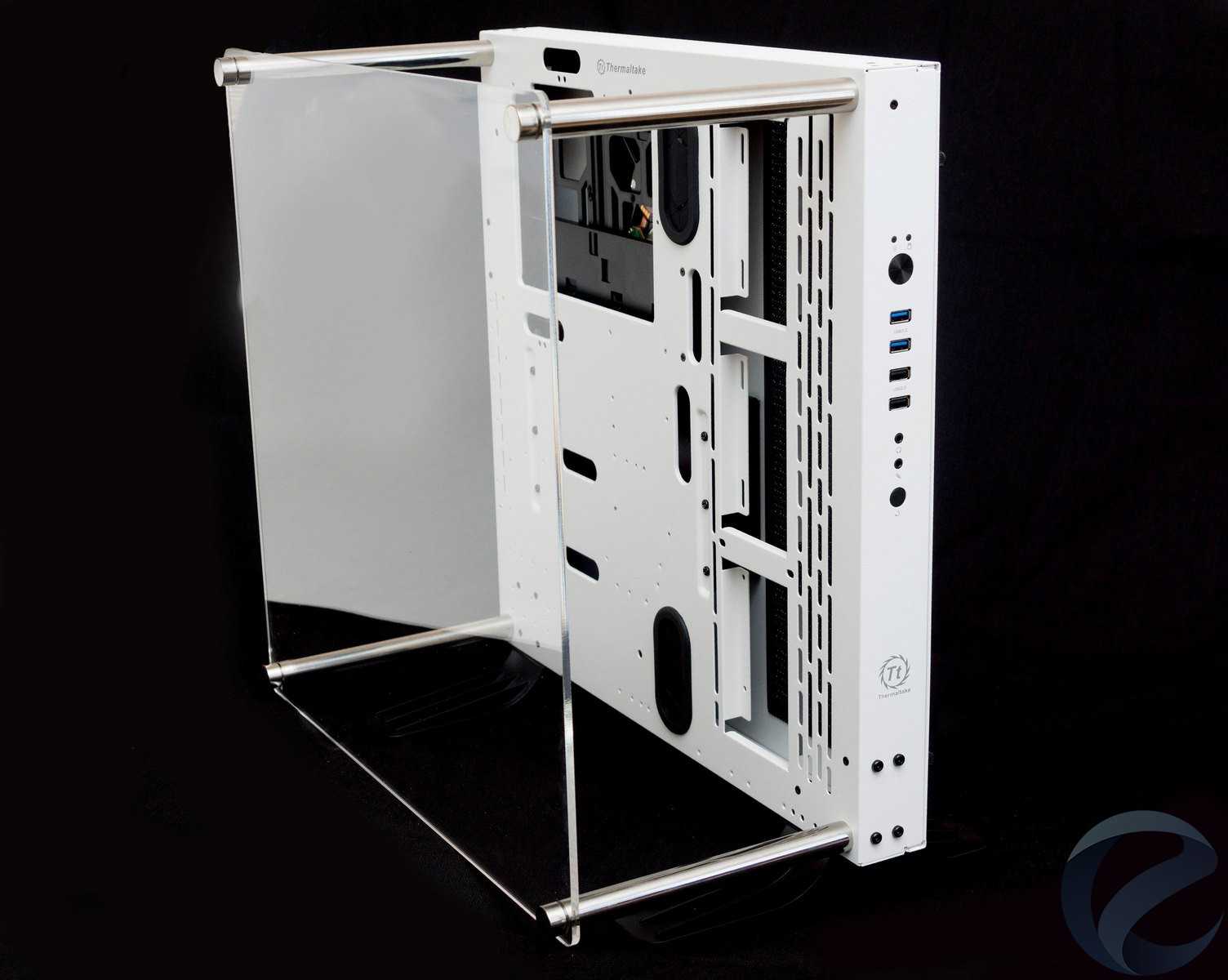
С правой стороны корпус закрывается крышкой. Между шасси и крышкой достаточно пространства не только для укладки кабелей блока питания, но и для установки пары накопителей.
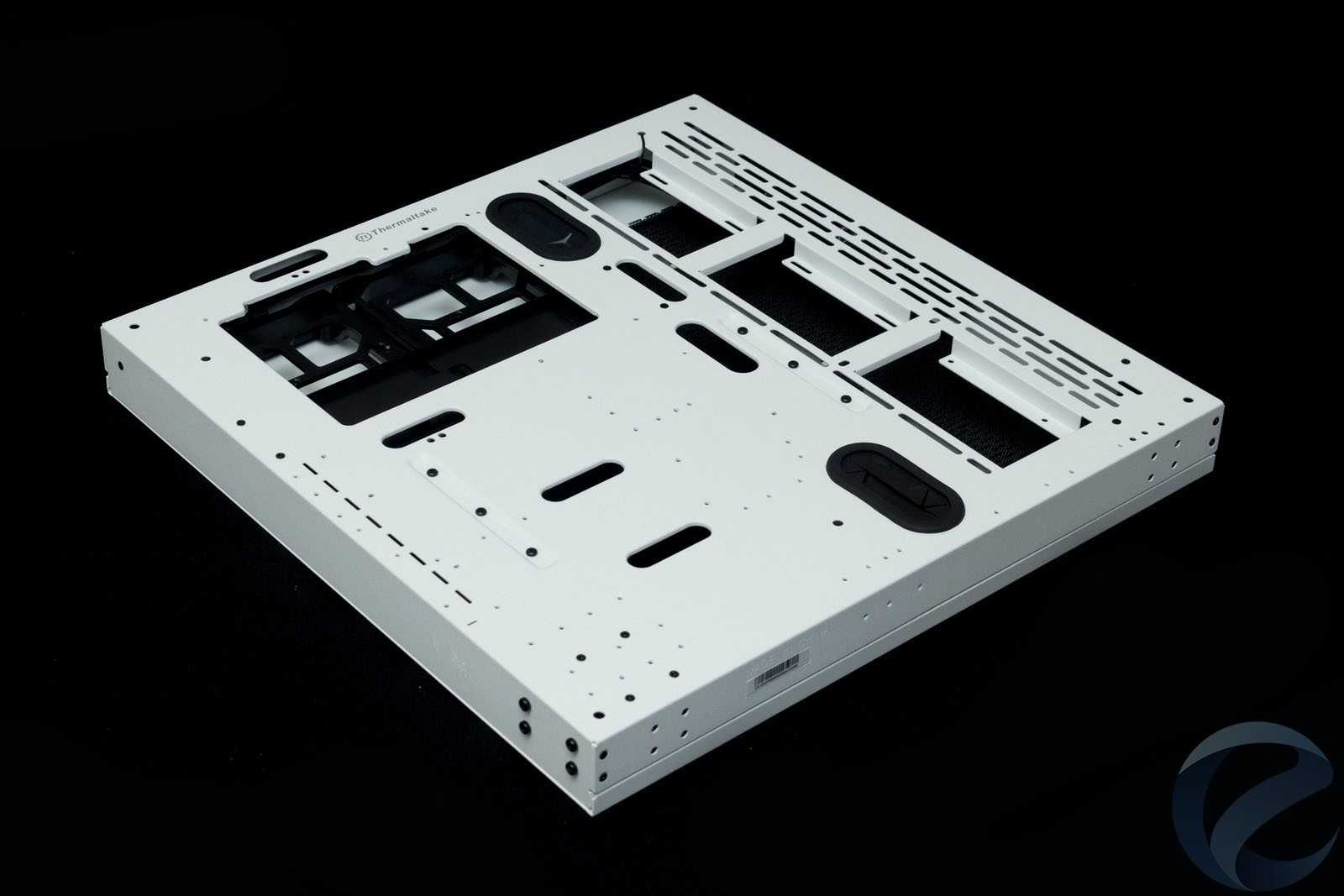
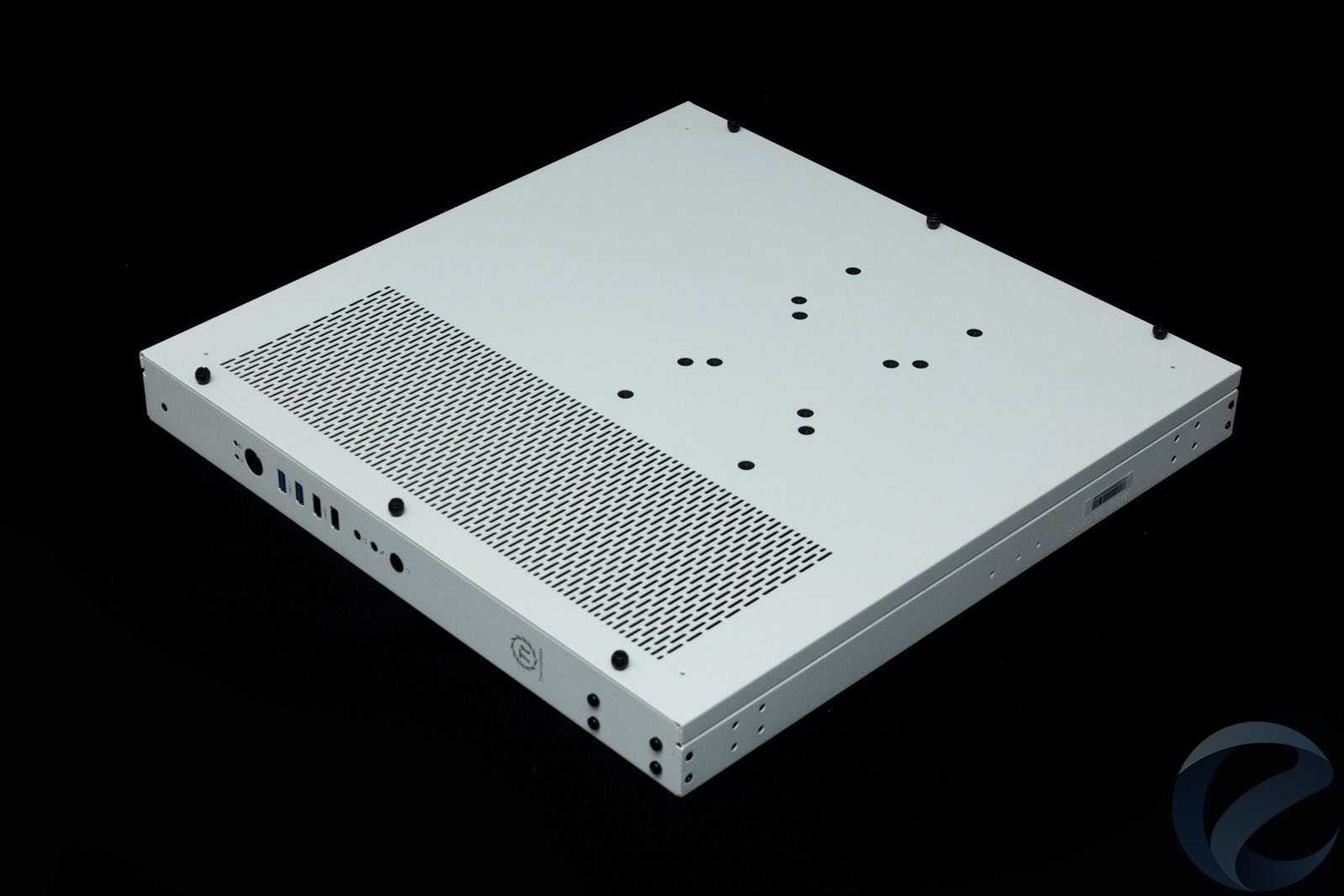
Основная призма корпуса имеет габариты 50 (толщина) × 465 (ширина) × 465 (высота) мм.
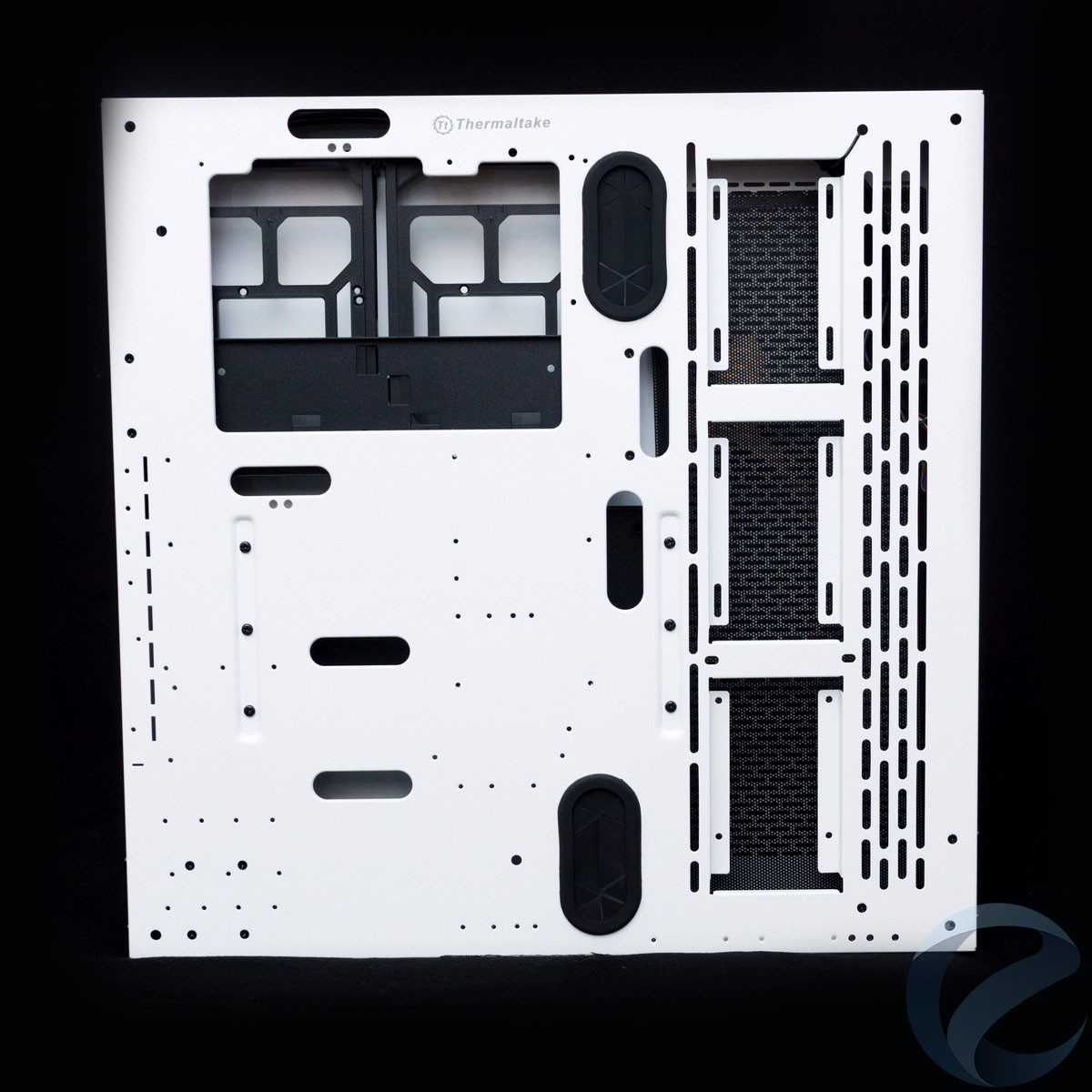
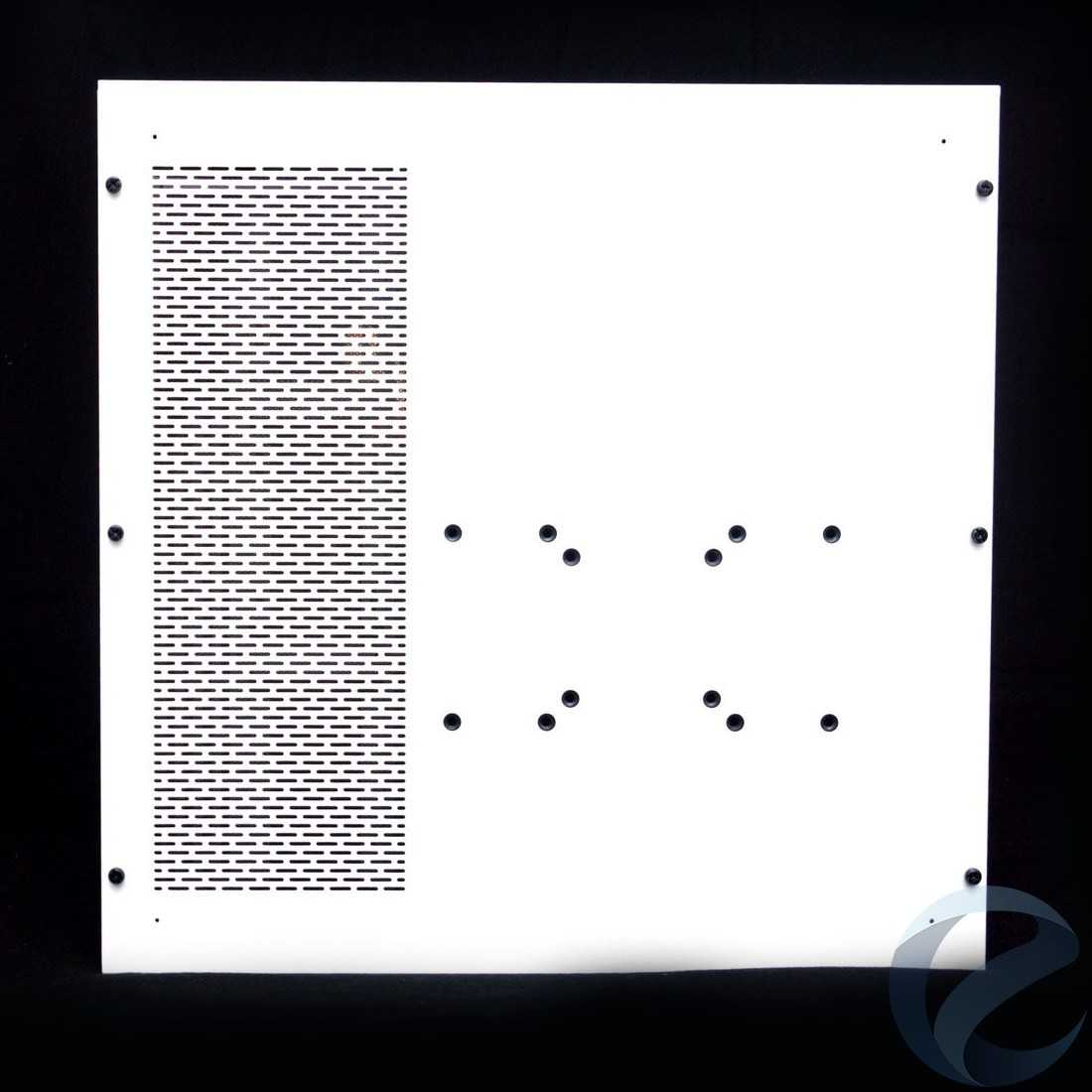
Все прочие элементы накручиваются на основание. С левого бока сборка будет закрываться акриловой прозрачной панелью. С торцов стенки не предусмотрены, это способствует лучшему отводу тепла, но не защищает от пыли.
На передней панели размещены кнопки и интерфейсы. В наличии два USB 3.0 и два USB 2.0, аудио разъемы для микрофона и наушников. Кнопки включения и перезагрузки, а также два индикатора: питания и активности HDD.

На боковой крышке находятся отверстия для VESA крепления, приобретается отдельно. Внутри усилительная пластина. Треть крышки занимает перфорация, под ней есть фильтр на магнитах.
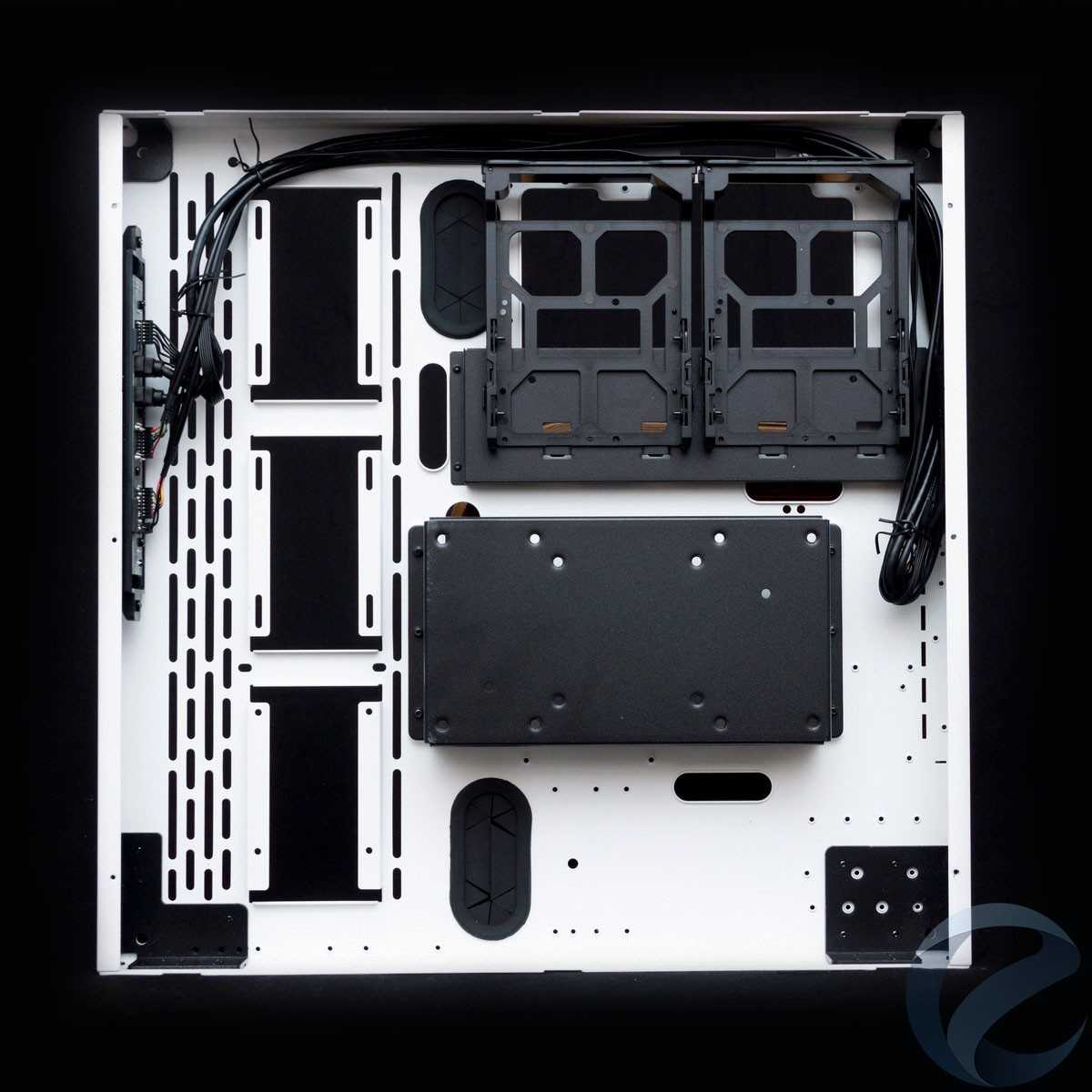
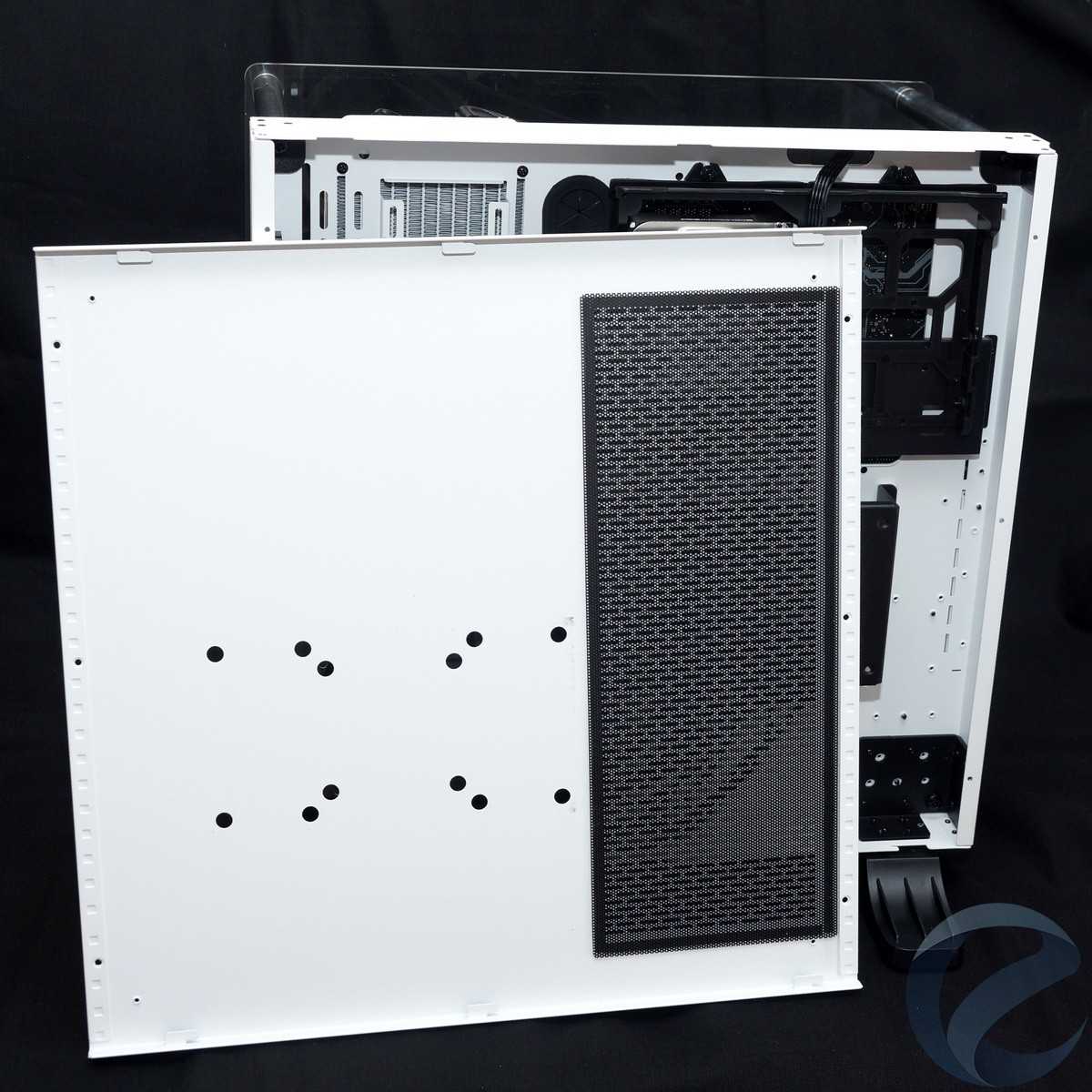
Шасси корпуса для установки комплектующих мало чем отличается от обычного компьютерного корпуса. Блок питания традиционно устанавливается снизу на скобки. Возможна вертикальная ориентация блока питания при установке материнской платы Micro ATX. Выше находятся три отверстия для интерфейсных кабелей, подключаемых к материнским платам. Используются в зависимости от форм-фактора материнской платы. Снизу и сверху два отверстия с резиновыми заглушками, нижнее для вывода кабелей от БП, верхнее для подключения их к материнской плате. Между ними еще два вертикальных отверстия. Большой вырез в районе расположения CPU на материнской плате обеспечит крепление backplate при установке системы охлаждения. Выше имеется еще одно отверстие для кабеля питания CPU.
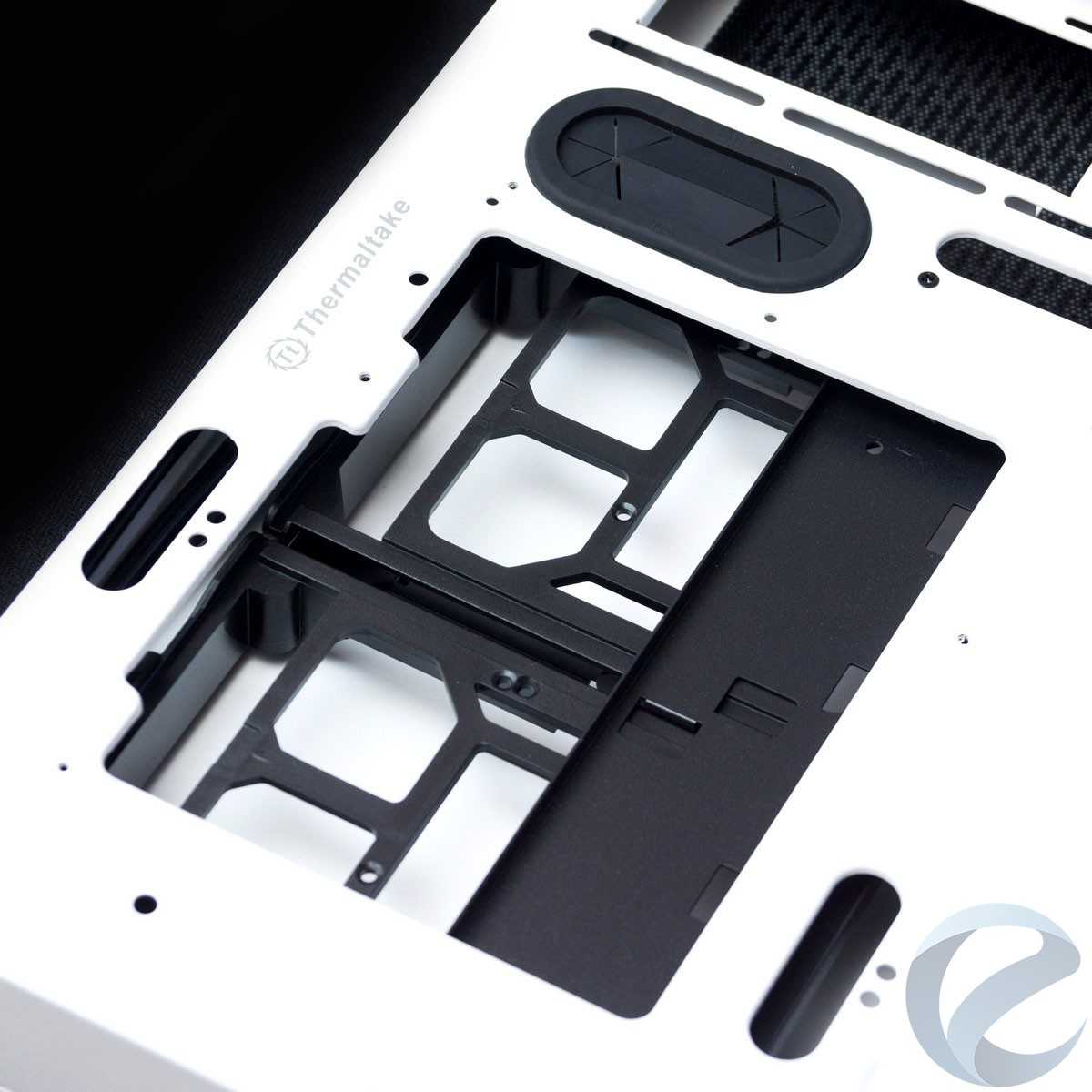
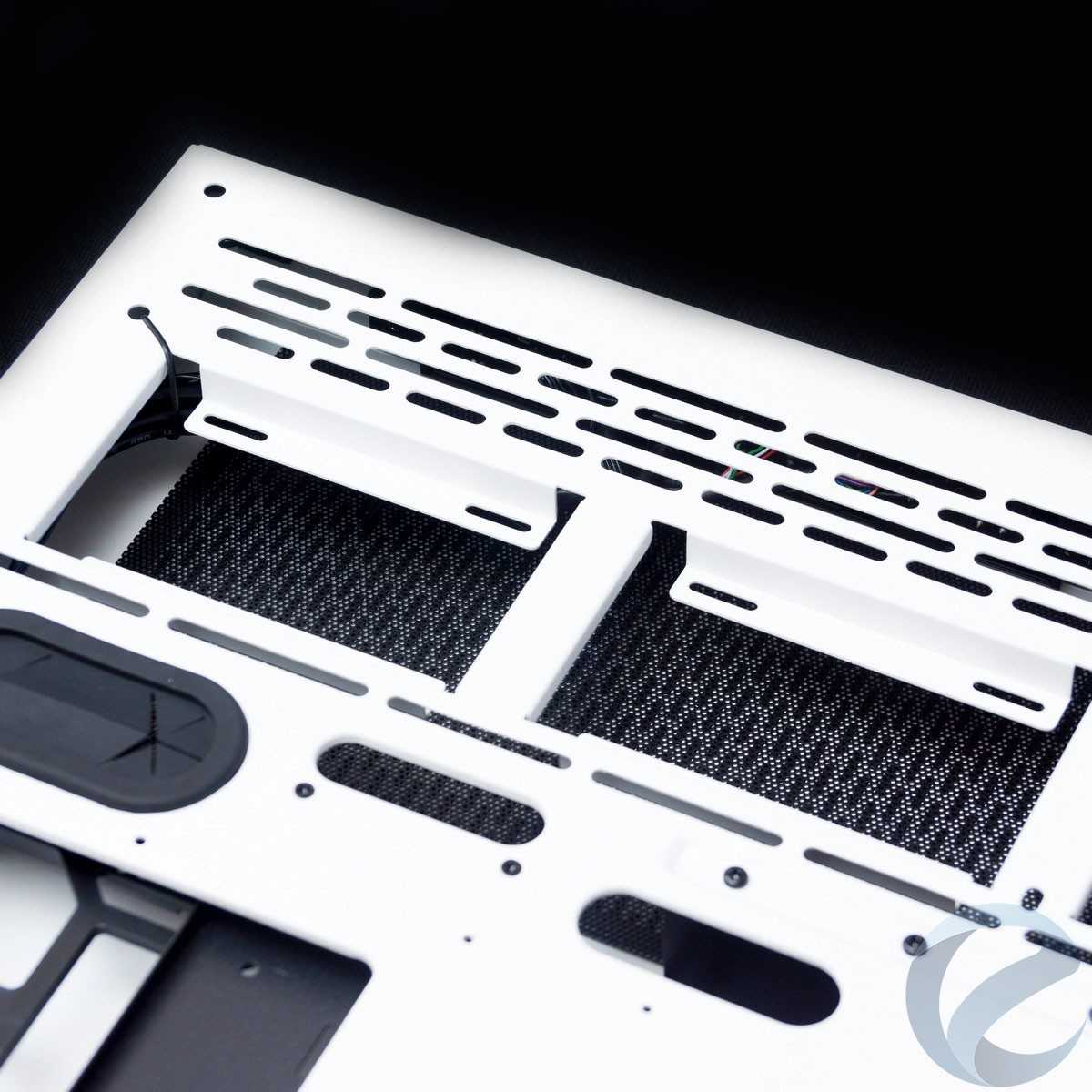
На правой половине шасси сделаны три прямоугольных отверстия. В этом месте возможна установка накопителей или радиаторов системы жидкостного охлаждения.
Внутри корпуса мы видим две съемных корзины для накопителей. По центру съемный кронштейн для настенного крепления. Здесь же мы видим интерфейсную панель с кабелями для ее подключения к материнской плате.
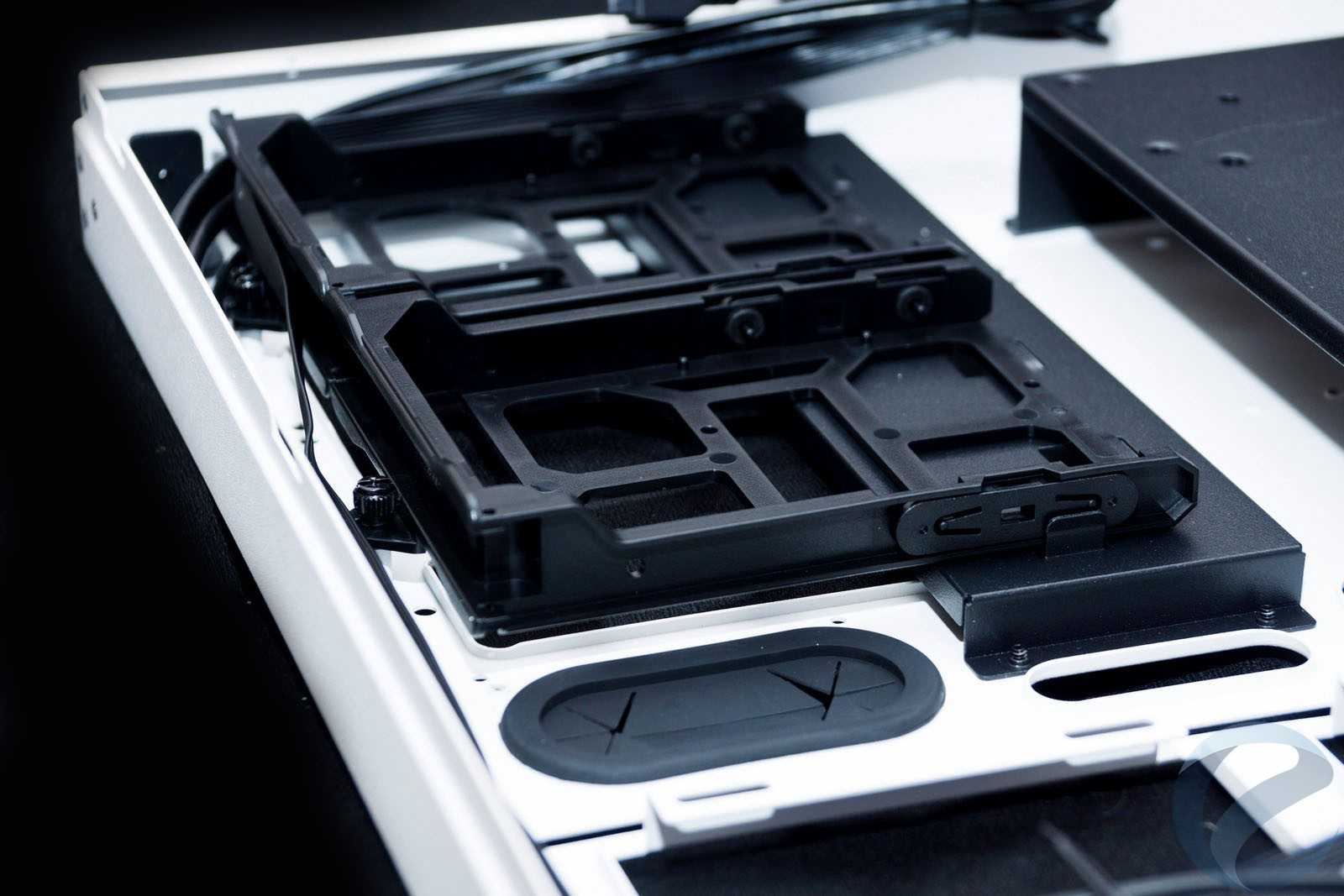
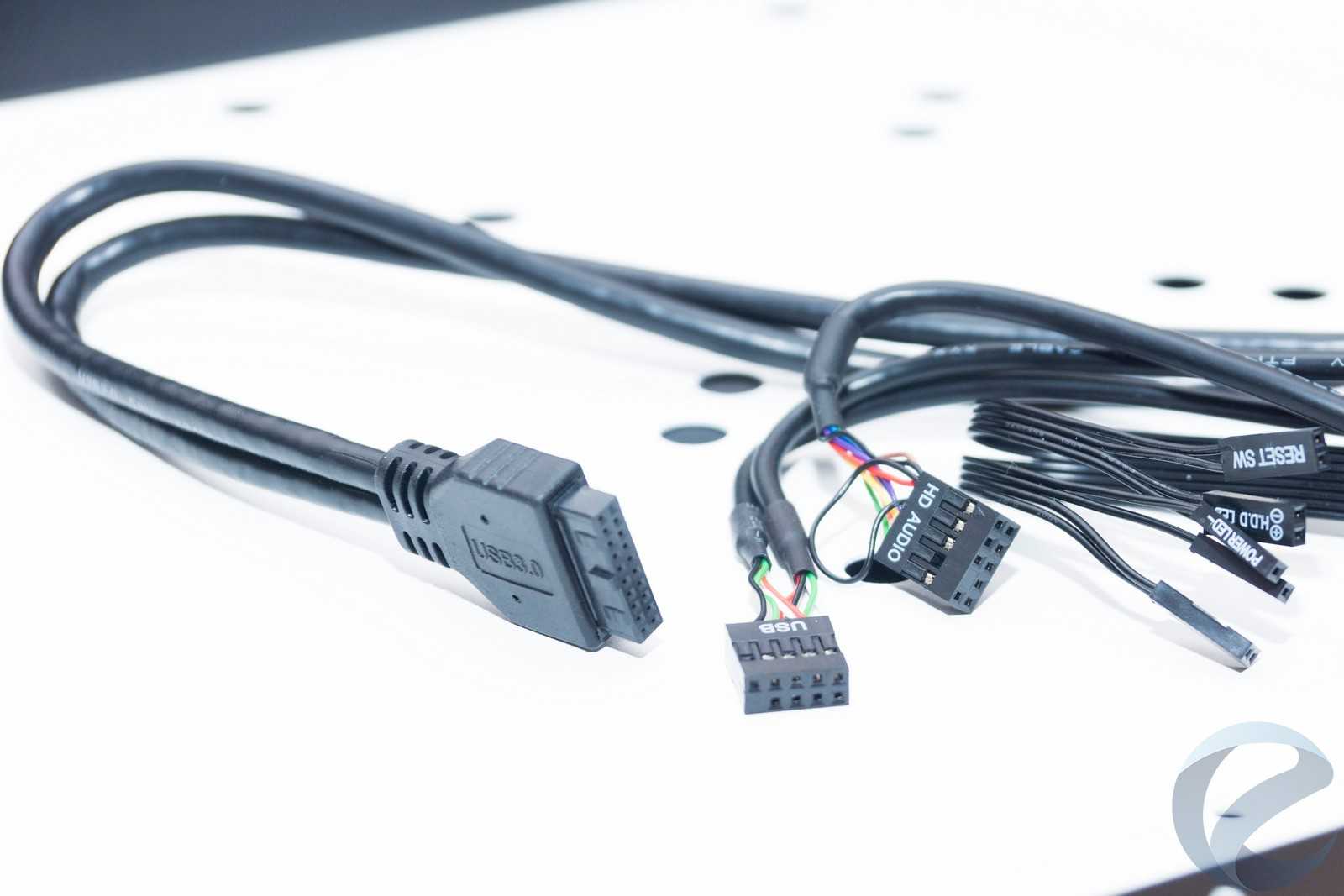
Углы корпуса усилены металлическими пластинами. К нижним уголкам крепятся ножки для вертикального расположения корпуса.
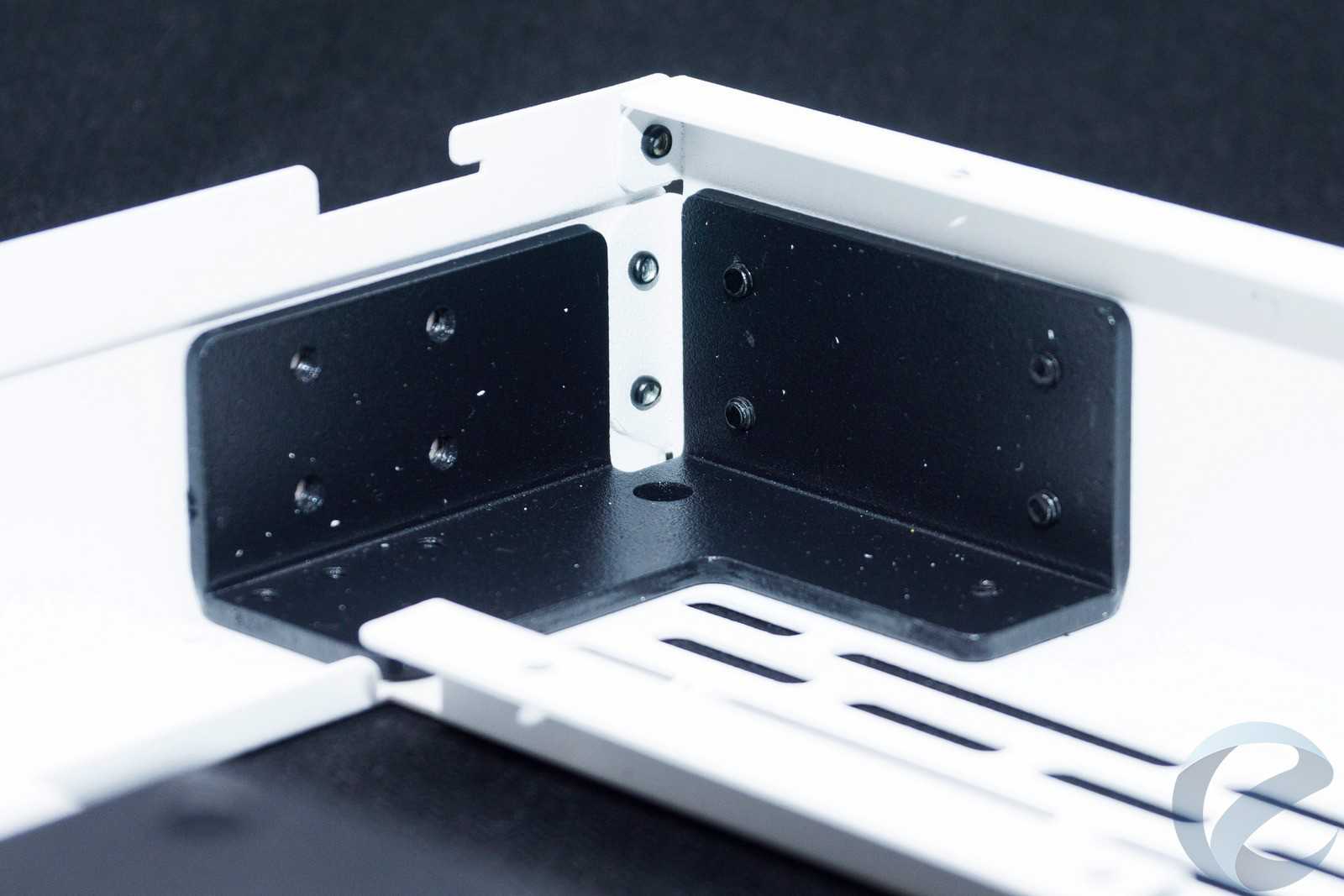
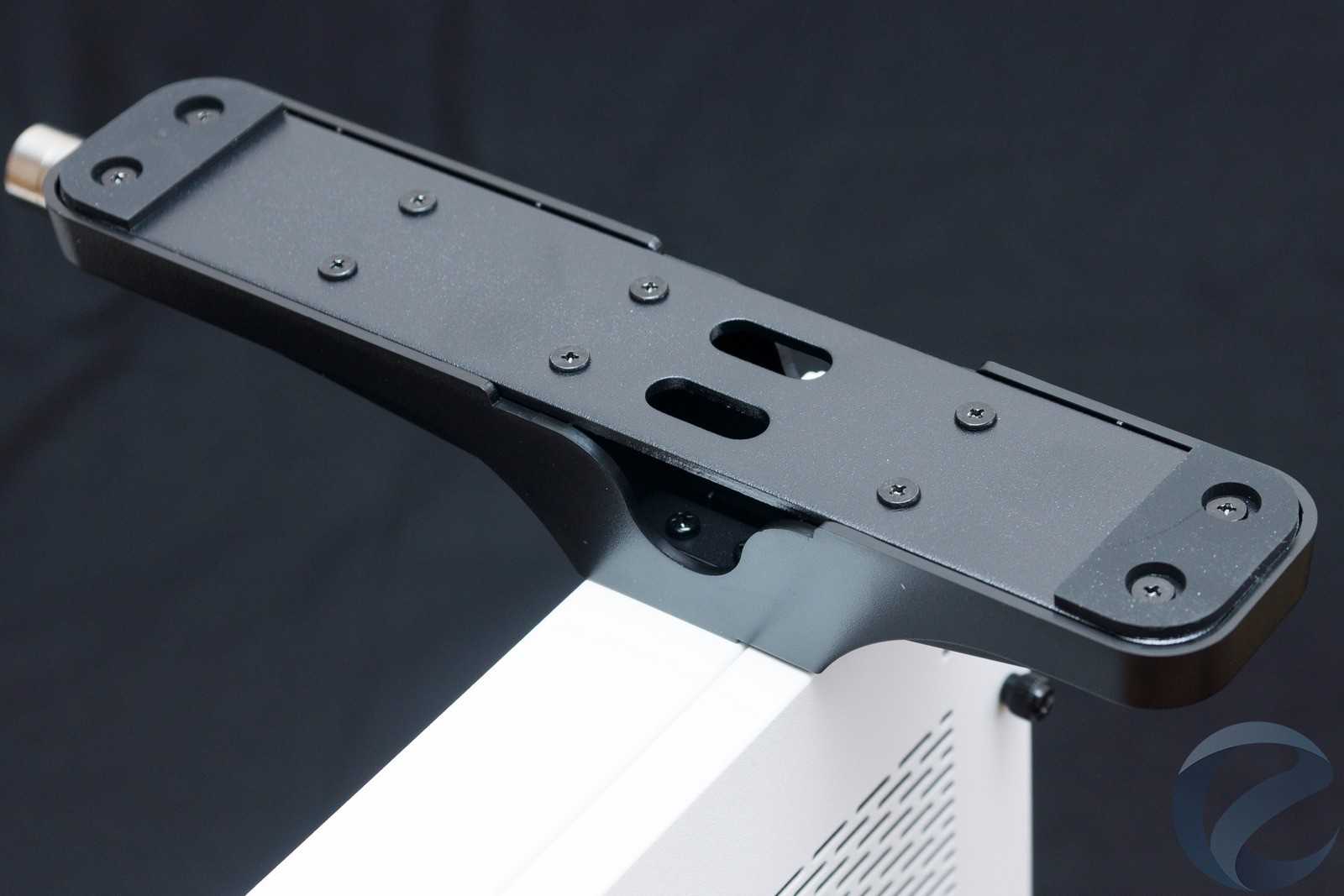
Тестовый стенд:
- Процессор: Intel Core i5-7600K;
- Видеокарта: PowerColor PCS+ R7 370;
- Материнская плата: MSI Z270 GAMING M5;
- Память: DDR4-2400 Qumo 8 ГБ;
- Блок питания: Gigabyte G750H;
- СЖО: Deepcool CAPTAIN 240 EX;
- SSD накопитель — OCZ Solid 3 60GB;
- HDD: WD Purple 2 TB;
- ОС: Windows 10 64bit.
Final Thoughts
What strikes us first is that we are not used to having access to a chassis in which you can pack it full of powerful components, and ATX motherboard, and not have to deal with a large and wide chassis to do it. Of course, we are acutely aware of the media center PC cases, but most of them are either much smaller or are not made to orient vertically at all. Then we look at the fact that while they could have stuck with the usual layout, Thermaltake decided to make this a left hand drive chassis when it is upright, and the inverted ATX internal layout is something we have always liked as well. Then, you can also lay this chassis on its side, and slide it in on top of the Blu-ray player or over a receiver in the media center, making the Core G3 a special breed of chassis.
Cooling inside of the chassis is not perfect, as things can get warm dependent on your setup, but from the factory, we tested the stock layout. There is sufficient air flow from the pair of 120mm fans; the noise was kept to 27dB or less, and with all of the passive ventilation, and there is no real way to trap any air in pockets inside of this case.
The looks are good too, and we like the heavily patterned front panel design and the location of the front I/O panel. It is easy to see once you have tinkered with the chassis as long as we have, that the design is well thought out and everything has a purpose. Even when it comes to additional goodies that ship with the chassis, all of the parts work as intended. Thermaltake provides the ability to do things with your build you could not typically do in something that can also be called an HTPC, media center PC, living room gaming system, or a standalone tower chassis sitting on your desk.
With high availability, finding the Core G3 is not an issue. From what we have seen in the aspect of chassis design along with the included bits in the form of hardware and goodies, we feel the pricing is more than justified. Near $70 is a small price to pay to get such a great looking chassis that provides LCS support, a parallel mounting of the GPU to the motherboard, inverted ATX layout, and a huge window to see it all. The dual orientations is also a plus as it does not strand one buyer from the others. You do not have to use it any specific way and is part of the genius of this design.
For us, the Core G3 is well worth the investment, and if you are sick of cases too large for your needs, you can install a beast of a PC inside, and be ready for VR, 4K gaming, or stick with whatever works to power your current setup at the desk. The choice is yours.
Chad’s Chassis Test System Specifications
- Motherboard: GIGABYTE GA-Z68X-UD4-B3
- CPU: Intel Core i7 2600K (buy from Amazon)
- Cooler: Corsair H80i GT (buy from Amazon)
- Memory: G.Skill Ripjaws F3-12800CL6D-4GBXH
- Video Card: ZOTAC GeForce GTX 970 AMP. Extreme Edition (buy from Amazon)
- Storage: SuperSpeed 128GB SSD
- Power Supply: SilverStone SST-ST85F-G (buy from Amazon)
- OS: Microsoft Windows 7 Ultimate 64-bit (buy from Amazon)
Тестирование
По факту у нас открытый стенд без установленных дополнительных вентиляторов. Говорить о возможностях охлаждения корпуса мы не будем, открытый стенд всегда отлично справляется с отводом тепла. В этом случае все зависит от систем охлаждения других комплектующих. Так же корпус не может и повлиять на шумовые характеристики комплектующих.
Вызывает беспокойство только охлаждение жестких дисков, находящихся внутри корпуса. Здесь отсутствует активная вентиляция. Но как показали тесты, температура при установке одного диска в пределах нормы.
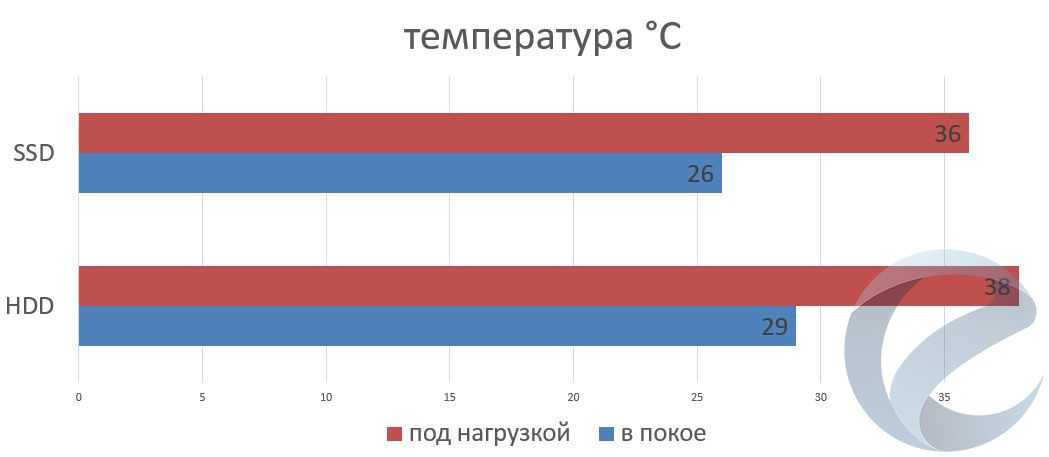
Процессор на частоте 4,5 ГГц прогрелся до 92 °С по самому горячему ядру. Вентиляторы на радиаторе установлены на продув воздушного потока через радиатор и соответственно через корпус.

Видеокарта прогрелась до 78 °С. И именно видеокарта стала источником повышенного уровня шума. Без нагрузки вентиляторы данных моделей не вращаются, но под нагрузкой раскручиваются на максимум.
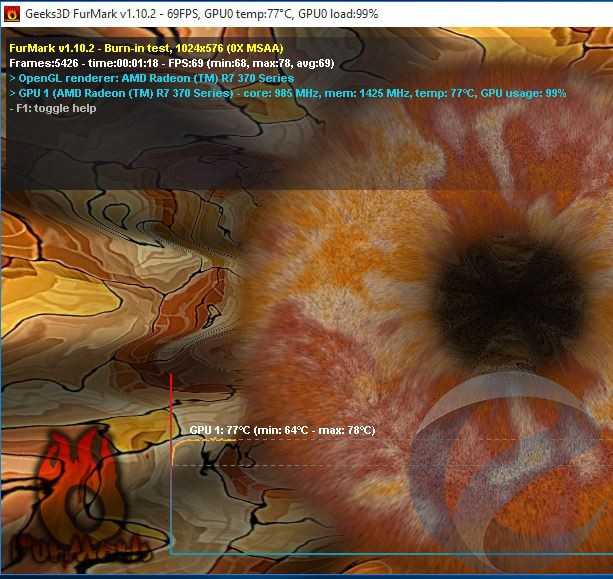
Все остальные вентиляторы: блока питания и системы охлаждения, очень тихие, немного выделяется только периодический шум помпы.
В целом же, несмотря на открытый корпус, получилась тихая система.
Единственный минус открытого дизайна – это неизбежная пыль, накапливающаяся со временем. И, пожалуй, это будет единственная проблема владельцев корпуса Core P3.
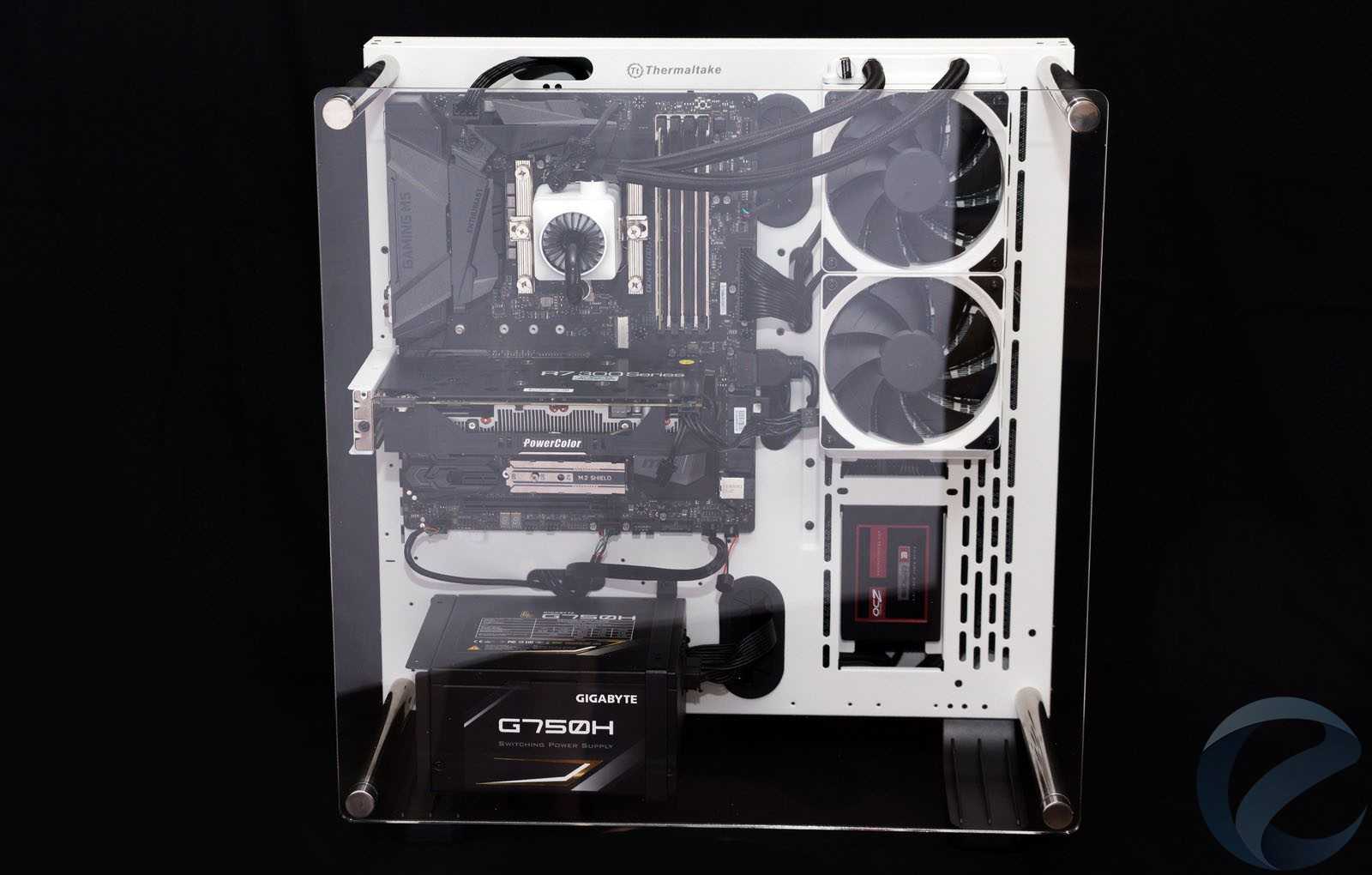
Packaging
The packaging is typical of Thermaltake and the Core series, using plain cardboard, black bars, and a grid to highlight the rendering of the Core G3 off to the left. Along with the company name and site address, we also see notations to the SFX PSU support, as well as the LCS certification.
Moving to the next panel, we run into this. Thermaltake and Core G3 tops the panel, while the majority is used for the specifications chart like what we just covered. At the bottom, we find the serial number of this chassis as well as the package dimensions.
The back of the box tells all about this chassis design and layout. With the exploded diagram used to fill this panel, there is no way not to know what comes apart or where to locate specific parts of the Core G3
While the naming of the company and the chassis start things off again on this side, Thermaltake uses this panel to list features like the front I/O connectivity, the storage options, and support for the PSU and liquid cooling. These are then repeated a total of 12 times.
Freed from the cardboard confines, we get to see how this chassis is protected. A clear plastic liner surrounds the chassis, after clinging plastic has been applied to both sides of the window. Once that was done, the top and bottom of the chassis are protected with Styrofoam caps, which allowed our sample to arrive from the other side of the globe without a blemish on it.
Упаковка
Корпус поставляется в картонной коробке без цветной полиграфии. С одной стороны, схематичное изображение разобранного корпуса со всем комплектом. С другой – изображение сборки на основе CЖО. Сбоку расписаны технические характеристики изделия. Коробка непривычно узкая для компьютерного корпуса.
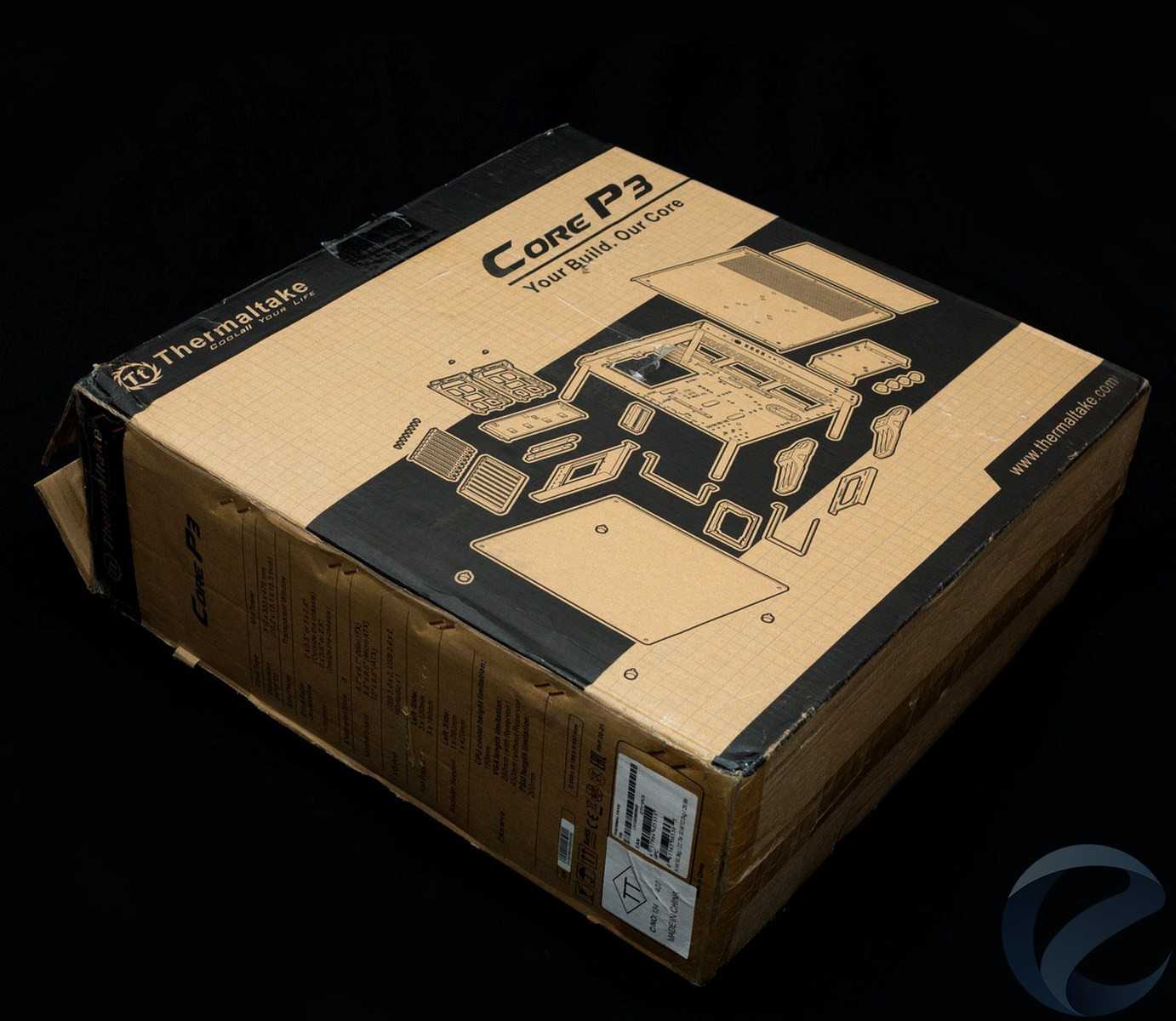
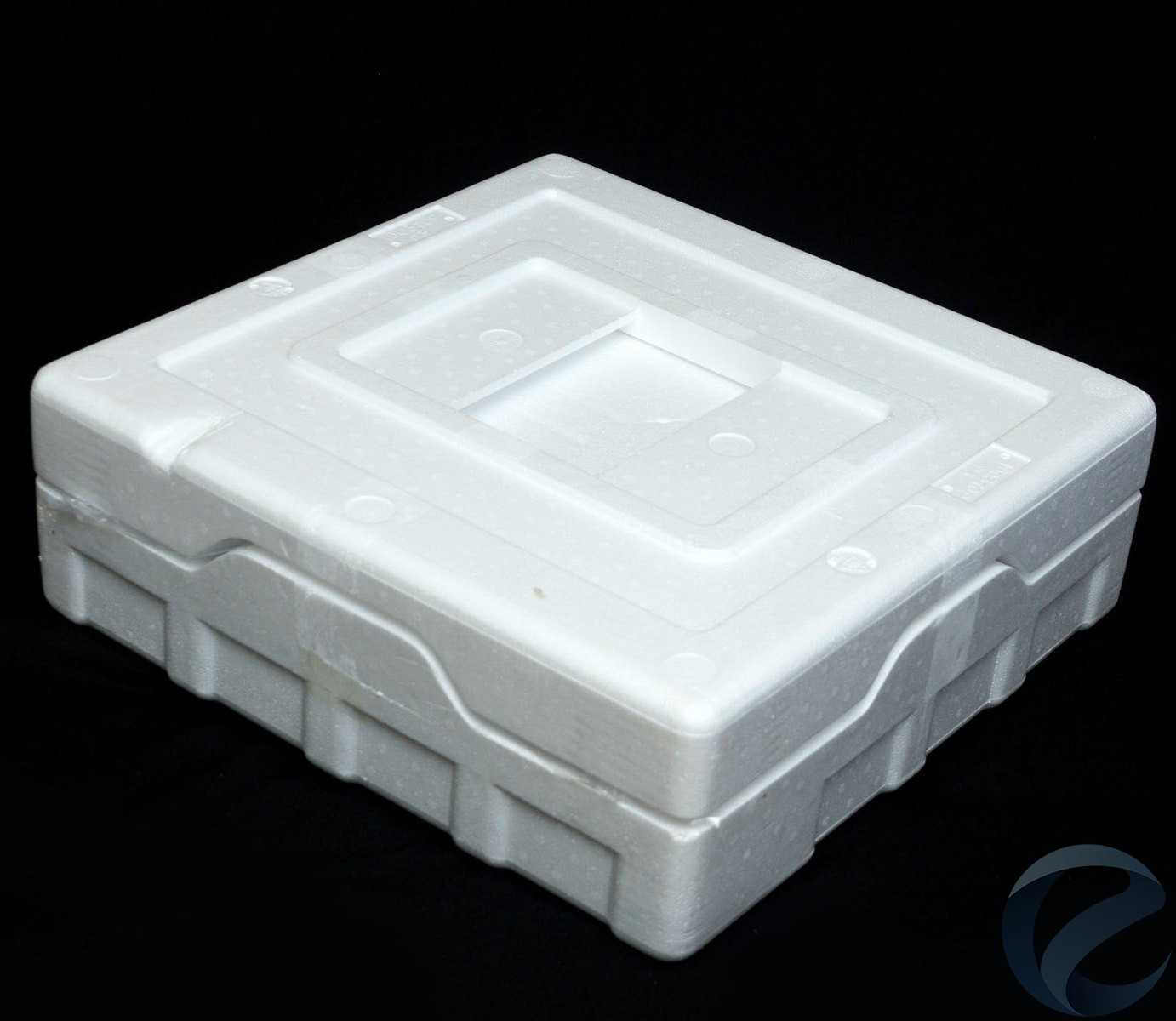
Внутри пенопластовые демпферы в виде ящика с крышкой, полностью закрывают и сохраняют весь комплект. Под крышкой бережно упакована акриловая панель. Кроме картонной и пенопластовой прокладки имеется и бумажная наклейка с двух сторон прозрачной панели, предохраняющие её от повреждений.
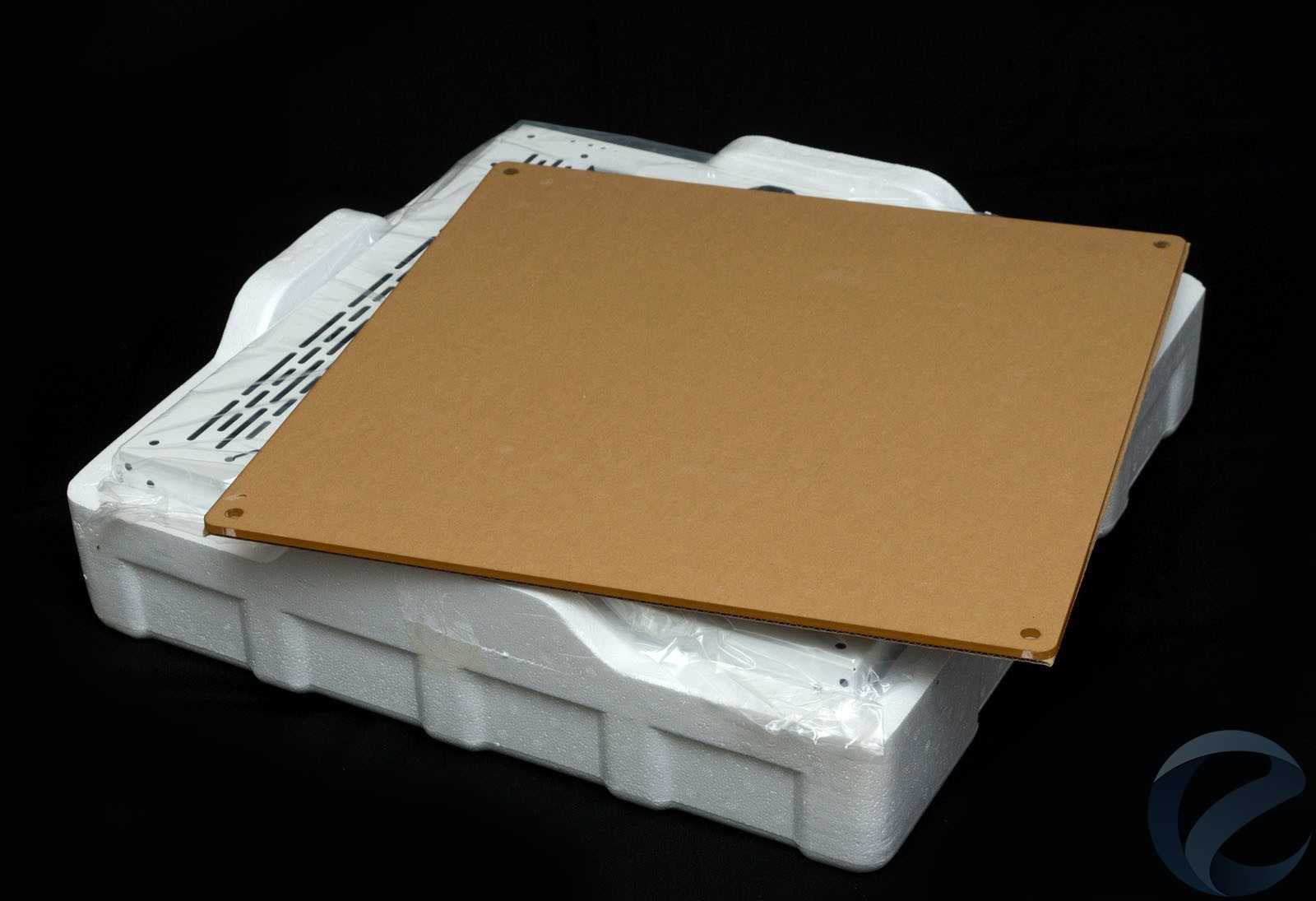
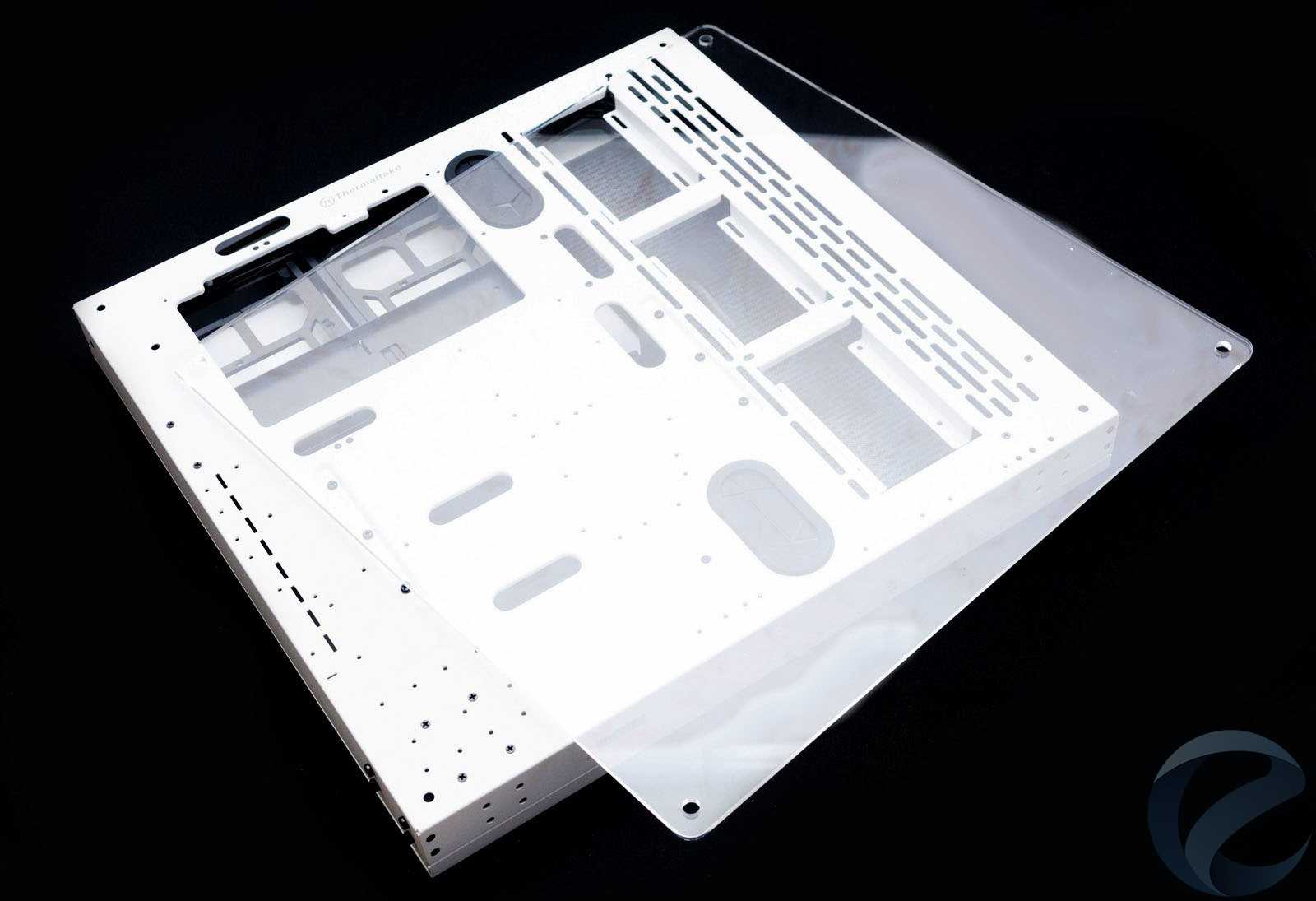
Ниже лежит сам корпус, а под ним, в основании упаковки, аккуратно разложен и зафиксирован весь комплект. Все детали упакованы в индивидуальные пластиковые пакеты с застегивающимися клапанами. Упаковка очень надежная и практичная, все хорошо зафиксировано.
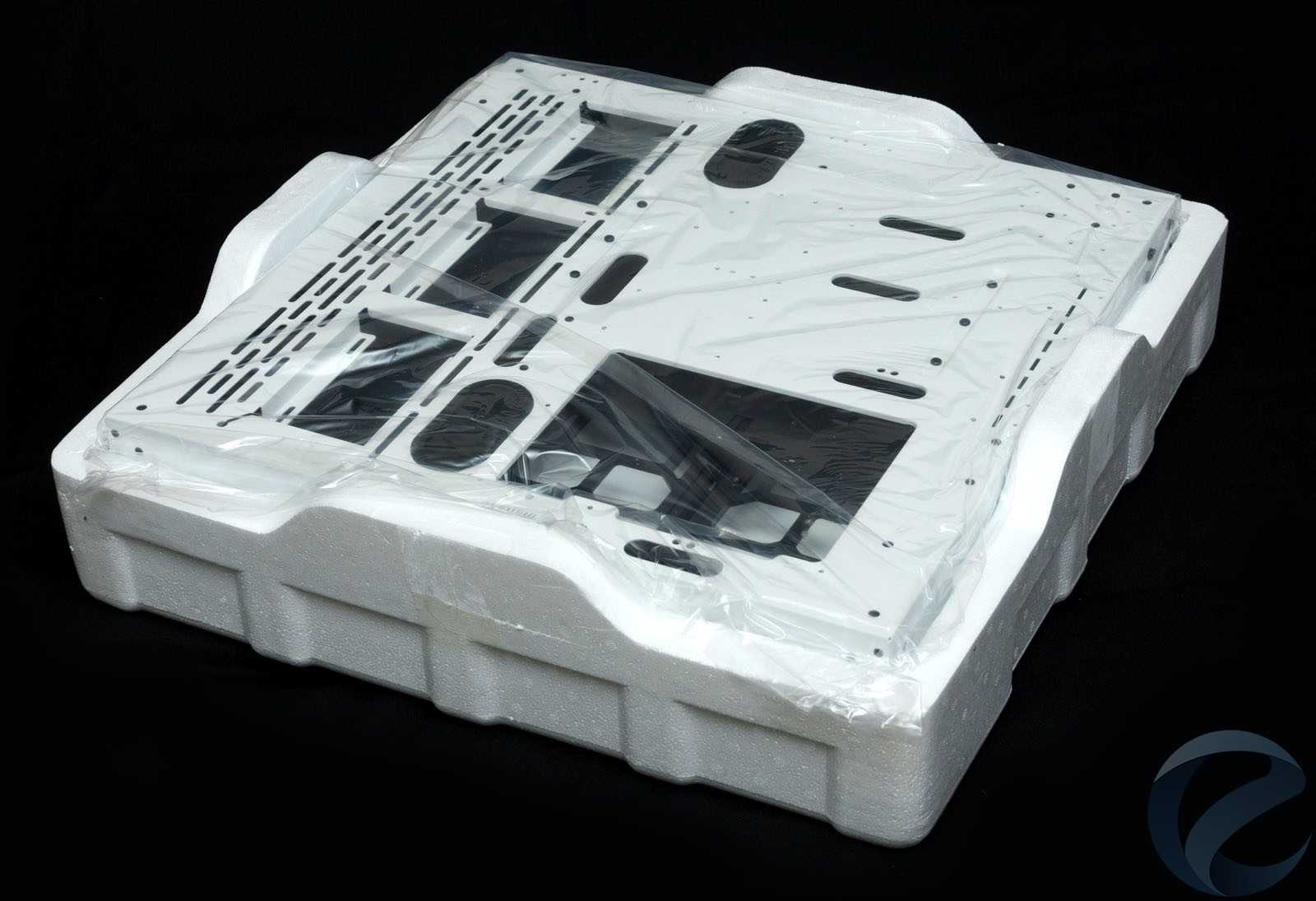
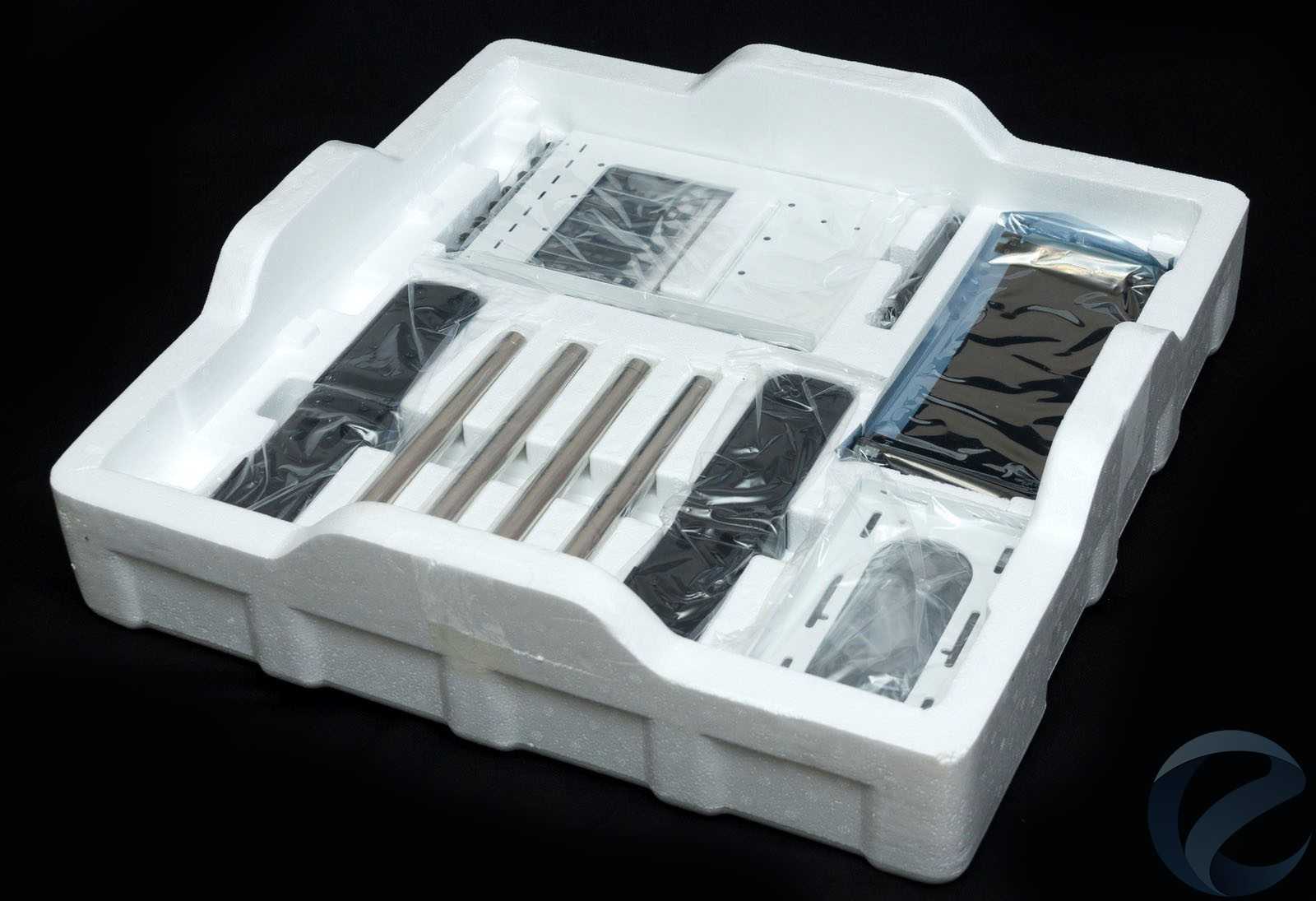
Hardware & Documentation
Here we have the optional rubber feet that have tape on them to stick to the left side panel’s exterior for the horizontal layout orientation. There are also four fan screws, a standoff, PSU screws, HDD tray locking screws, and 2.5″ drive and motherboard screws. The group at the bottom are used for 3.5″ drive installation.
We also received a PCI-e riser cable inside of the cardboard box. This is the same model we got with the Core P3, and in this instance, it allows a standard sized card to fit inside of this thin chassis design.
Here we have four wire tie strips to help manage what wiring may be hanging loose inside of the Core G3. We also get a pair of dense foam pads to help support the video card in the horizontal orientation. The brackets are what mount to the motherboard tray, and are what supports the video card in the vertical orientation.
Thermaltake also ships the Core G3 with a full on manual. Inside, you will find what all of the parts are, how many you should have of each part. As you continue through the pages, it shows hot to install them all. Along with a step-by-step guide to installing all of your parts, there is excellent renderings and text to help explain the situations so that nobody should get stuck at any point of the build process.
Inside the Core G3
Inside of the front bezel, we do find a removable dust filter that is held in with tabs around it. The front of the chassis comes whipped with a pair of 120mm Turbo fans in the front, which offer good flow at 1000 RPM and do so in near silence.
Peeking into the main compartment of the Core G3, we see this is where the wiring has been tied up, and the manual and some goodies are hanging in a bag from the same tie point. The box we can see in there is housing just one thing, the PCI-e riser cable.
Inside of the front, we can see more of the TT-1225 Turbo fans. The wiring is hidden at the moment, but it is sleeved, and both fans are powered with 3-pin connections.
At the bottom, still, at the front of the chassis, we find this removable storage drive rack. This will only house two drives, but each tray has mounting holes for 2.5″ and 3.5″ drives. As an additional feature, since the chassis can be reoriented, screws ship with this chassis to lock the trays into the steel cage.
At the top of the Core P3, after removing the dust filter, we find the optional 120mm fan locations. Of course, the video card used and how you route the front I/O wiring may have a bearing on whether or not this location can even be used.
The motherboard tray offers a large access hole at the bottom for CPU cooler access, due to the inverted layout. The hole at the top is there to lessen the amount of metal used as our guess, as you do not need access to the PCI-e slots. The tray is clearly marked for various motherboards, and standoffs come pre-installed for ATX motherboards.
The bottom of the chassis, at the back, is where we can install an SFX PSU. There are no pads on the floor, but there is ventilation for the fans. The reason there are no pads is that the PSU does not rest on the steel section of the chassis once it is mounted with screws.
The view of the inside of the back of the chassis shows us much of what we saw from the outside. Since the expansion card secures from outside of the chassis, it leaves this plane flat from top to bottom.
Behind the motherboard tray, there is maybe 3mm of room for wiring, but the right edge of it is bent over and blocks that ability. The holes you see running down the right side of the motherboard tray support video card brackets, which make sure the unusual way in which is it mounted, it is not left flopping around inside.
All of the wiring is black, and in this group, we can see the USB 2.0 and USB 3.0 connections on the left, HD Audio and most of the LED and switch wires in the middle, and we can also see one of the fan leads.
Технические характеристики
- Производитель: Thermaltake;
- Модель: Core P3 Show (CA-1G4-00M6WN-00);
- Цвет: белый и черный;
- Материал: сталь;
- Толщина стали: 1.2 мм;
- Форм-фактор корпуса: Mid Тower;
- Совместимость с материнскими платами: Mini ITX/Micro ATX/ATX;
- Отсек для устройств 5.25”: отсутствует;
- Отсеки для накопителей снаружи корпуса: 2 × 3.5” или 3 × 2.5”;
- Отсеки для накопителей внутри корпуса: 2 × 3.5” или 2 × 2.5”;
- Количество слотов для плат расширения: 8;
- Регулировка вращения вентиляторов: отсутствует;
- Предустановленные вентиляторы: отсутствуют;
- Возможность установки вентиляторов: 3 х 120 мм/3 х 140 мм;
- Совместимость с радиаторами: 240/280/360/420 мм;
- Максимально допустимая высота процессорного кулера: до 180 мм;
- Максимально допустимая длина видеокарты: 280 мм (с резервуаром), 450 мм (без резервуара);
- Максимально допустимая длина блока питания: 200 мм;
- Габариты: 333 (глубина) × 470 (ширина) × 512 (высота) мм;
- Вес: 10.3 кг;
- Цена: 7000 руб.
Case Build & Finished Product
When the build is completed, more specifically to our build, the front of the chassis never changes in styling. The view has changed slightly, as you can see a bit of the SATA cable on the left, and the hoses for the H80i GT are plainly visible on the right.
We like the layout, with the video card cooler facing the window at the top, and the motherboard hidden behind it. While we did remove the stock cooling, we were able to get the AIO in place without issue. While things are tight inside, everything we normally use in a regular chassis fits, except for a standard-sized PSU.
The card fits well into the expansion slots, and the dust shield popped right into place. We were not supplied an SFX PSU, so we turned to our parts shelf and grabbed our Fractal Design unit which had everything we needed to get this build finished.
Behind the motherboard tray, there is not much to see other than bits of the PCB showing through the holes in it. We did run the SATA cable down the right side, and also used that gap to run the fan wiring for the AIO, everything else was contained on the other side.
All put back together, we stopped to take a picture. We adore the view found looking through the side panel, where everything is on full display. At this point, everything is installed and supported, and we have no qualms in running this chassis in this orientation.
Once we added some power, we see the blue power LED glowing, and the HDD activity LED which we missed is also blue. While the Zotac LED is now facing the CPU, we do still see the glow from it, but we can see the Corsair logo on the head unit plain as day.
For those who wish to set the Core G3 on a shelf under the TV, you can opt for the second set of feet. Of course, you should take the other set of feet off, which we did not, but in either orientation, the chassis is designed to grab air from the front so that it will remain cool inside, no matter the choice of how it sits.
Страница 1: Тест и обзор: Thermaltake Core G3 – миниатюрный башенный корпус ATX
Как правило, миниатюрные башенные корпуса вмещают, максимум, материнские платы формата Micro-ATX. С корпусом Thermaltake Core G3 все иначе, благодаря просторному дизайну внутрь можно установить материнскую плату ATX. Поэтому Thermaltake позиционирует корпус как идеальный вариант для сборки компактных, но мощных систем. Но на какие жертвы пришлось пойти в угоду миниатюризации?
В последние годы корпуса Midi Tower становились все шире. Все же сказывалась необходимость вмещать самые высокие башенные кулеры, да и за лотком материнской платы должно быть достаточно места для комфортной прокладки кабелей. Поэтому повсеместно распространились корпуса с шириной 23 см и больше. С другой стороны, не всем пользователям нужен большой и крупный корпус, который занимает много места на рабочем столе. Конечно, всегда можно приобрести компактную систему малого форм-фактора (SFF). Но что делать, если вам хочется установить в компактный корпус материнскую плату ATX?
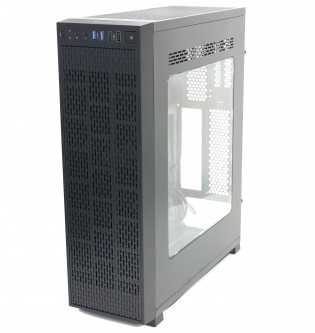
» Fotostrecke
Thermaltake как раз и предлагает подобную возможность с корпусом Core G3. Корпус официально относится к формату Mini-Tower, но в него умещаются материнские платы не только форматов Mini-ITX и Micro-ATX, но и ATX. Глубина 37 см намного меньше типичного корпуса Midi Tower, не говоря уже о ширине всего 14 см. По сравнению с популярным Fractal Design Define R5 объем корпуса уменьшился с 56,9 л до 23,6 л. В оба корпуса можно установить материнскую плату ATX, но у Core G3 мы получаем объем более чем в два раза меньше.
Конечно, у корпуса есть свои недостатки. Ширина 14 см не позволяет установить внутрь высокие башенные кулеры, да и с пространством для прокладки кабелей не все так просто. Даже 5,25-дюймовые приводы не влезли бы по ширине, но в корпусе таких отсеков и не предусмотрено. Внутрь можно установить только два жестких диска или SSD. Наконец, в корпусе Core G3 формату ATX соответствует только материнская плата – блок питания придется использовать формата SFX. К счастью, в последнее время на рынке появились достаточно мощные и эффективные блоки питания подобного формата, поэтому данное ограничение не такое проблемное. Конечно, имеющиеся ограничения не позволяют установить в Core G3 некоторые наиболее мощные конфигурации ПК. Но в корпусе без проблем уместится длинная двухслотовая видеокарта, да и штатно вы получите два предустановленных 120-мм вентилятора.
Для экономии пространства видеокарта в Core G3 устанавливается вертикально. Поэтому вместе с корпусом прилагается соответствующий riser-кабель. Также вы получите руководство пользователя, аксессуары монтажа, несколько кабельных затяжек, самоклеящиеся ножки, изолирующие прокладки для видеокарты, а также два пластиковых крепления, поддерживающих видеокарту.
Перед тем, как мы перейдем к рассмотрению корпуса, позвольте привести ключевые спецификации в таблице:
| Спецификации: Thermaltake Core G3 | |
| Производитель и модель: | Thermaltake Core G3 |
| Материал: | Сталь, пластик |
| Габариты: | 140 x 454 x 371 мм (Ш x В x Г) |
| Форм-фактор: | ATX, Micro-ATX, Mini-ITX |
| Отсеки накопителей: | 2x 2,5/3,5″ (внутренние) |
| Вентиляторы: | 2x 120 мм (спереди, предустановлены, 1.000 об/мин), 1x 120 мм (сверху, опионально) |
| Вес: | 4,2 кг |
| Цена: | 69,90 евро (рекомендованная) |
<>Тест и обзор: Thermaltake Core G3 – миниатюрный башенный корпус ATXThermaltake Core G3 | Внешний вид (1)
Заключение
Корпус Thermaltake Core P3 Snow Edition с открытой структурой дает пользователю уникальные возможности по сборке компьютера своей мечты. Да, он не подходит для сборки обычных рабочих станций. Перед нами открытый стенд демонстрирующий окружающим начинку вашего компьютера. Модная тенденция производителей украшать комплектующие дизайнерскими элементами, LED и RGB подсветкой неизбежно должна была привести к появлению таких корпусов. Обычного прозрачного окна на боку корпуса уже недостаточно. Core P3 доступен в различных цветовых исполнениях: белый, черный, красный и зеленый.
Кроме этого, у корпуса широкие возможности. Его можно размещать горизонтально и вертикально, вешать на стену. Модульная конструкция позволяет устанавливать комплектующие по своему усмотрению. Если и этого вам недостаточно, то можно скачать и распечататьдополнительных элементов. Это могут быть корзины для 5.25” аксессуаров и приводов, кронштейны для установки вентиляторов и дополнительных панелей, и т.д.
Плюсы:
- Революционный дизайн;
- Качество изготовления;
- Модульная конструкция:
- Эффективное охлаждение;
- Дополнительные возможности по размещению;
- Совместимость с крупногабаритными комплектующими;
- Возможность сборки на основе СЖО;
- Доступная цена.
Минусы:
- Со временем неизбежен налет пыли на комплектующих;
- Не на всех отверстиях шасси присутствуют резиновые заглушки;
- Не качественный райзер в комплекте.



























